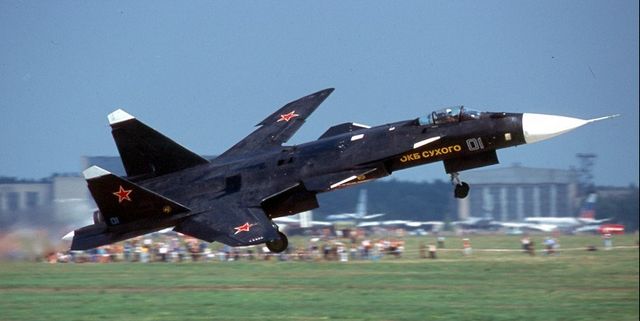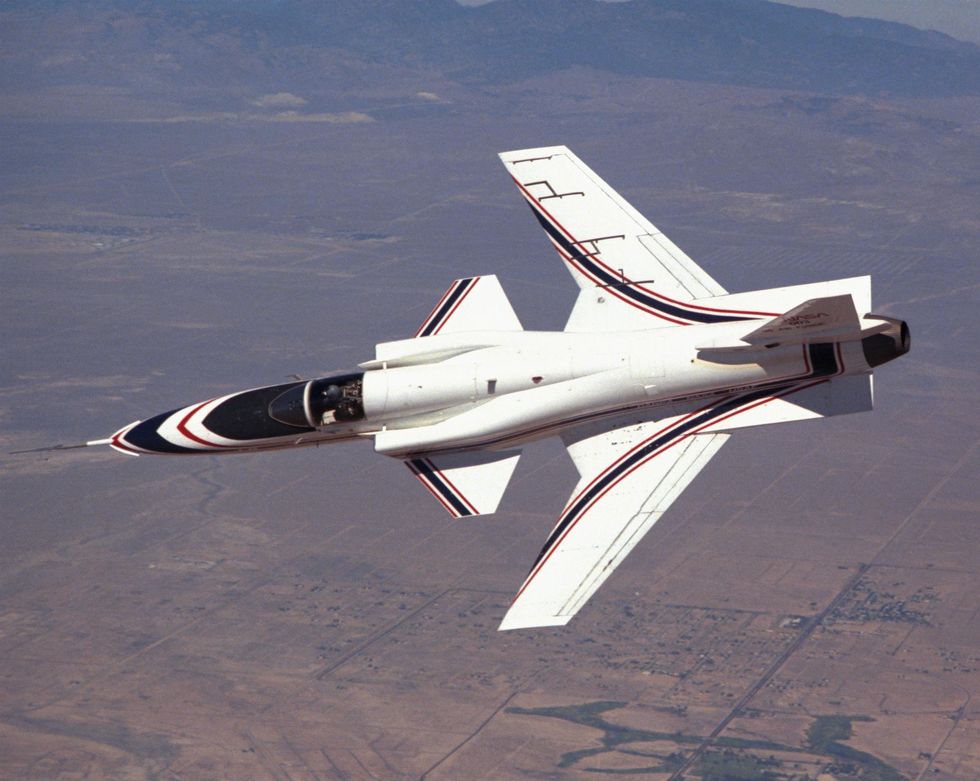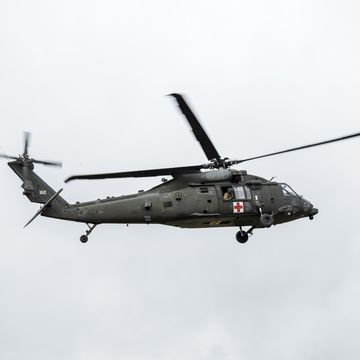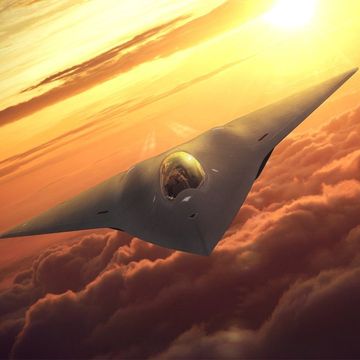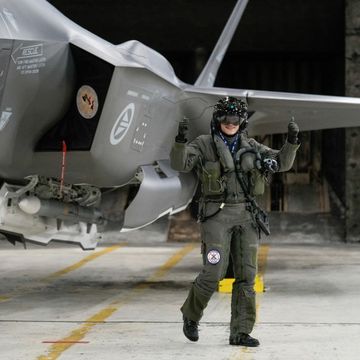- The Su-47 “Berkut” (“Golden Eagle”) was towed out of storage during a Russian air show this week.
- The Su-47 is one of two known aircraft built with forward-swept wings, which greatly increases maneuverability at low speeds.
- The U.S. also looked into forward-swept wings with the X-29 aircraft, but the experimental plane required extensive fly-by-wire computer controls and lightweight carbon fiber materials to fly.
One of the world's most unusual-looking fighter jets made a surprise appearance earlier this week at a Russian air show. The Su-47 “Berkut” (“Golden Eagle”) was towed out of storage and placed on display at the MAKS-2019 show at Zhukovsky International Airport, just outside of Moscow. The Su-47 is one of two known aircraft built with forward-swept wings.
According to The Aviationist, the Su-47 was unexpectedly towed out from storage and placed on a static display, its first public appearance since 2007. The black Su-47 jet features forward swept wings, greatly increasing its maneuverability at low speeds. Unfortunately for the aircraft, the fall of the Soviet Union left Russia in a poor financial state and was unable to finance development without a foreign customer.
Here's The Aviationist's video from the air show:
Forward swept wings were investigated by both the U.S. and Soviet Union/Russia. The highly unusual wing arrangement gives a fighter jet a high angle of attack at low speeds, enabling it to change direction quickly. This could give the Su-47 a great advantage in a dogfight.
Unfortunately, as the U.S. Defense Advanced Research Projects Agency notes, forward swept wings make aircraft “aerodynamically unstable.” The American X-29 forward-swept jet required extensive fly-by-wire computer controls and lightweight carbon fiber materials to make the plane flyable. This seems to have been a similar problem with the Su-47, as the new Su-57 fighter jet, developed after the Su-47, retains a traditional wing layout. Other Russian aircraft, particularly the Sukhoi Su-35 “Flanker-E,” achieve similar high angle of attack capabilities at low speeds with a combination of nose-mounted canards and thrust vectoring nozzles.
The rollout of the Su-47 is a curious one. Why, after 12 years, is Russia showing off a jet that didn’t lead to anything practical? Moscow should be placing its new Su-57 jet front and center without distraction.
It’s likely that some Su-47 technology—wings not included—went into the Su-57, and maybe the aircraft is being shown as part of the long road to a new Russian fighter.
Source: The Aviationist

Kyle Mizokami is a writer on defense and security issues and has been at Popular Mechanics since 2015. If it involves explosions or projectiles, he's generally in favor of it. Kyle’s articles have appeared at The Daily Beast, U.S. Naval Institute News, The Diplomat, Foreign Policy, Combat Aircraft Monthly, VICE News, and others. He lives in San Francisco.
